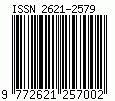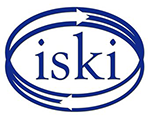Social Media in Electoral Communication: A Case Study of Strategic Initiatives by Bantul Election Commission for the 2024 Elections
DOI:
https://doi.org/10.12928/channel.v11i2.377Keywords:
social media, electoral communication, political communication, voter engagement, digital literacyAbstract
In the contemporary landscape of democratic processes, the role of social media has become instrumental in shaping political communication strategies. This study investigates the nuanced dynamics of social media utilization, with a specific focus on its impact on the effectiveness of communication strategies employed during the 2024 Elections by the Bantul Election Commission (KPU Bantul) in Indonesia. Recognizing the potential of social media in enhancing voter participation, KPU Bantul strategically employed platforms such as Instagram, websites, and YouTube to educate, engage, and mobilize the public. Through a qualitative analysis rooted in social media theory and communication strategy frameworks, this research explores the innovative methods used by KPU Bantul. Key findings encompass strategic networking and coordination, digital literacy initiatives targeting novice voters, challenges in measuring social media impact, and the transformative potential of integrating social media within electoral processes. The study not only sheds light on the intricate mechanisms of social media utilization but also offers practical insights for improving social media initiatives in future electoral contexts.
References
Ashrianto, P. D., & Sosiawan, E. A. (2020). Content Analysis of the Controversy Over the Communication of Government Policies in Handling COVID-19 in Online Media. https://doi.org/10.31098/pss.v1i1.187
Bin, W. (2021). Communication and community in the new media age. In Communication and Community in the New Media Age. https://doi.org/10.4324/9781003175179
Biroroh, T. (2021). Optimizing The Role of the General Election Commission in Realizing Democratic Elections in Indonesia. International Journal of Law and Politics Studies, 3(2). https://doi.org/10.32996/ijlps.2021.3.2.5
Brenner, J. E., & Igamberdiev, A. U. (2021). Communication. In Studies in Applied Philosophy, Epistemology and Rational Ethics. https://doi.org/10.1007/978-3-030-62757-7_12
Carr, C. T., & Hayes, R. A. (2015). Social media: Defining, developing, and divining. Atlantic Journal of Communication, 23(1), 46–65.
Ceia, V. (2020). Digital Ecosystems of Ideology: Linked Media as Rhetoric in Spanish Political Tweets. Social Media and Society, 6(2). https://doi.org/10.1177/2056305120926630
Chaffey, D. (2016). Global Social Media Research Summary 2016. Smart Insights: Social Media Marketing.
Cui, F., & Shang, J. (2020). Bibliometrics and knowledge-mapping analysis of progress in agricultural heritage research in China: Based on the China Knowledge Network and Web of Science databases. Chinese Journal of Eco-Agriculture, 28(9). https://doi.org/10.13930/j.cnki.cjea.200370
Dodokh, A., & Al-Maaitah, M. A. (2019). Impact of social media usage on organizational performance in the Jordanian Dead Sea cosmetic sector. European Journal of Business and Management. Retrieved from https://core.ac.uk/download/pdf/234628765.pdf
Dolan, R., Conduit, J., Fahy, J., & Goodman, S. (2017). Social media: communication strategies, engagement, and future research directions. International Journal of Wine Business Research, 29(1). https://doi.org/10.1108/IJWBR-04-2016-0013
Fuchs, C. (2021). Social media: A critical introduction. Social Media, 1–440.
Haryanti, S., & Rusfian, E. Z. (2019). Government Public Relations and Social Media: Bridging the Digital Divide on People with Social Welfare Problems. JKAP (Jurnal Kebijakan Dan Administrasi Publik), 22(2), 128. https://doi.org/10.22146/jkap.34602
Hasugian, G. G., Hendrayani, Y., & Handayani, L. (2020). Strategi Humas Siber Dalam Meningkatkan Kualitas Pelayanan Informasi Publik 4.0 Di Badan Kepegawaian Negara. Jurnal Pustaka Komunikasi, 3(2).
Horbinski, A. (2019). Convergence Culture. In The Blackwell Encyclopedia of Sociology. https://doi.org/10.1002/9781405165518.wbeos1270
Ida, R., Saud, M., & Mashud, M. (2020). An empirical analysis of social media usage, political learning and participation among youth: a comparative study of Indonesia and Pakistan. Quality and Quantity, 54(4). https://doi.org/10.1007/s11135-020-00985-9
Kaplan, A. M., & Haenlein, M. (2012). Social Media: Back to the Roots and Back to the Future. Journal of Systems and Information Technology, 14(2), 101–104.
Khair, R., & Adhani, A. (2021). The role of the general election commission to increase community political participation in the 2020 general election of Medan city. (September), 139–143. https://doi.org/10.12928/commicast.v
Kovaitė, K., Šūmakaris, P., & Stankevičienė, J. (2020). Digital communication channels in industry 4.0 implementation: The role of internal communication. Management (Croatia), 25(1). https://doi.org/10.30924/mjcmi.25.1.10
Laksana, N. Y., & Fadhilah, A. (2021). Computer-mediated communication and interpersonal communication in social media Twitter among adolescents. Journal of Social Studies (JSS), 17(1). https://doi.org/10.21831/jss.v17i1.39015
Mahoney, L. M., & Tang, T. (2016). Strategic Social Media. In Strategic Social Media. https://doi.org/10.1002/9781119370680
Maryani, E., Rahmawan, D., & Karlinah, S. (2020). The implications of social media on local media business: Case studies in Palembang, Manado and Bandung. Jurnal Komunikasi: Malaysian Journal of Communication. Retrieved from https://core.ac.uk/download/pdf/322855567.pdf
Mayangsari, D., & Salim, M. (2021). The Effectiveness of University Instagram Account as Information Media for Students. 3rd Jogjakarta Communication Conference (JCC 2021). https://doi.org/10.2991/assehr.k.211121.040
McGregor, S. C. (2019). Social media as public opinion: How journalists use social media to represent public opinion. Journalism, 20 (8), 1070–1086. https://doi.org/10.1177/1464884919845458
Meier, J. V., Noel, J. A., & Kaspar, K. (2021). Alone Together: Computer-Mediated Communication in Leisure Time During and After the COVID-19 Pandemic. Frontiers in Psychology, 12. https://doi.org/10.3389/fpsyg.2021.666655
Miles, M. B., & Huberman, M. A. (2012). Analisis Data Kualitatif: Buku Sumber Tentang Metode-Metode Baru. In Universitas Indonesia_UI Press.
Moise, D., & Cruceru, A. F. (2014). An empirical study of promoting different kinds of events through various social media networks websites. Procedia-Social and Behavioral Sciences, 109, 98–102.
Motoki, K., Suzuki, S., Kawashima, R., & Sugiura, M. (2022). A Combination of Self-Reported Data and Social-Related Neural Measures Forecasts Viral Marketing Success on Social Media. Journal of Interactive Marketing. https://doi.org/10.1016/j.intmar.2020.06.003
Muhazir, A., Miranti, A., & Sayidatina, K. (2023). Strategi Komunikasi Politik KPU Kabupaten Banyumas Meningkatkan Peran Sosialisasi Tahapan Pemilihan Umum Tahun 2024. Jurnal PIKMA: Publikasi Media Dan Cinema, 5(2), 176–189.
Muninger, M.-I., Mahr, D., & Hammedi, W. (2022). Social media use: A review of innovation management practices. Journal of Business Research, 143, 140–156.
Olimovich, D. I. (2020). The Impact of Innovative Technologies For Improving Economy Of Hotels. Asian Journal of Multidimensional Research. Retrieved from https://www.indianjournals.com/ijor.aspx?target=ijor:ajmr&volume=9&issue=5&article=029
Papa, A., Santoro, G., Tirabeni, L., & Monge, F. (2018). Social media as tool for facilitating knowledge creation and innovation in small and medium enterprises. Baltic Journal of Management. https://doi.org/10.1108/BJM-04-2017-0125
Pratama, K. P., & Rosilawati, Y. (2022). The Effect of Accessing Intensity The Brandonkent Everything Youtube Gaming Channel on Subscriber Aggressive Behavior. CHANNEL: Jurnal Komunikasi, 10(1). https://doi.org/10.12928/channel.v10i1.22604
Putri, T. T. A., Sitepu, I. Y., Sihombing, M., & Silvi, S. (2019). Analysis and Detection of Hoax Contents in Indonesian News Based on Machine Learning. Journal of Informatics. Retrieved from https://e-jurnal.pelitanusantara.ac.id/index.php/JIPN/article/view/489/291
Rao, H. N. (2019). The role of new media in political campaigns: A case study of social media campaigning for the 2019 general elections. Asian Journal of Multidimensional Research (AJMR), 8(4), 228. https://doi.org/10.5958/2278-4853.2019.00153.8
Salim, M., Suprantio, S., Marta, R. F., Hariyanti, N., Amali, M. T. (2023). Intensitas Mengakses Aplikasi TikTok dan Pengaruhnya terhadap Komunikasi Interpersonal Remaja. Warta: Ikatan Sarjana Komunikasi Indonesia.13-24. https://doi.org/10.25008/wartaiski.v6i1.200
Santoso, P. (2021). Framing Model of FPI News on MetroTV. Randwick International of Social Science Journal, 2(3). https://doi.org/10.47175/rissj.v2i3.246
Sari, D., & Yulianti, N. (2019). Celebrity Endorsement, Electronic Word of Mouth and Trust Brand on Buying Habits: Georgios Women Fashion Online Shop Products in Instagram. International Journal of Social Sciences and Humanities, 3(1), 82–90. https://doi.org/10.29332/ijssh.v3n1.261
Saud, M., & Margono, H. (2021). Indonesia’s rise in digital democracy and youth’s political participation. Journal of Information Technology and Politics, 18(4). https://doi.org/10.1080/19331681.2021.1900019
Sohal, S., & Kaur, H. (2018). A Content Analysis of YouTube Political Advertisements: Evidence from Indian Parliamentary Elections. Journal of Creative Communications, 13(2). https://doi.org/10.1177/0973258618761408
Solomon, D., & Theiss, J. (2020). Culture and Interpersonal Communication. In Interpersonal Communication. https://doi.org/10.4324/9780203147832-10
Sugiyono. (2017). metode kuantitatif, kualitatif. In alfabeta.
Suprapto, W., Hartono, K., & Bendjeroua, H. (2020). Social Media Advertising and Consumer Perception on Purchase Intention. SHS Web of Conferences, 76. https://doi.org/10.1051/shsconf/20207601055
Tasente, T. (2020). The elements of political communication on Facebook. Technium Social Sciences Journal, 4. https://doi.org/10.47577/tssj.v4i1.99
Valunaite Oleskeviciene, G., & Sliogeriene, J. (2020). Research methodology. In Numanities - Arts and Humanities in Progress. https://doi.org/10.1007/978-3-030-37727-4_2
Zuraida, Z. (2023). Comparing the Effectiveness of Hashtags in Digital Social Movements: A Case Study of #PercumaLaporPolisi and #PolriSesuaiProsedur in Indonesia. CHANNEL: Jurnal Komunikasi, 11(1). https://doi.org/10.12928/channel.v11i1.339
Downloads
Published
How to Cite
Issue
Section
License
Copyright (c) 2023 CHANNEL: Jurnal Komunikasi

This work is licensed under a Creative Commons Attribution-ShareAlike 4.0 International License.






